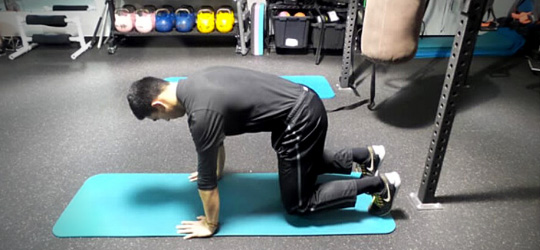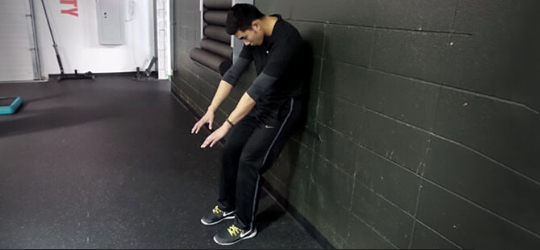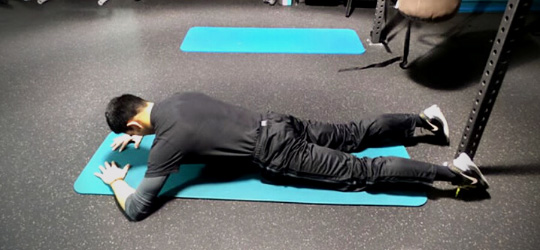Co-authored by Bill Hartman and Mike Robertson, founders of IFAST.
When it comes to optimizing movement and recovery, the two most crucial pieces of the health and performance “puzzle”, nothing is more important than proper breathing mechanics.
Dr. Karel Lewit once said: “If breathing is not normalized—no other movement pattern can be.”
If you’re breathing poorly, everything else is going to be out of whack, at least to some extent. Proper breathing is that important.
Get your breathing right, and you have the raw materials to build upon so that every other system in your body can work together to facilitate optimal movement and recovery.
From a movement or performance standpoint, this should be obvious.
If you aren’t breathing effectively and efficiently, how can you expect to perform well in an activity where the most basic requirement is the effective utilization of oxygen?
Breathing influences movement patterns, posture, pain, as well as performance. It does this by altering the position of the musculoskeletal system, causing restriction of airflow leading to underinflation or hyperinflation of your lungs, thus creating a mechanical barrier that limits movement.
In other words, in a very real way, being able to move optimally during performance and exercise comes back to the ability to breathe effectively.

Recovery is affected in a similarly detrimental way. To really understand optimal recovery, we have to look past the muscles to the nervous system.
Recovery of the nervous system is a powerful influencer in regard to regaining the capacity to provide output to the movement system.
If your nervous system is chronically fatigued, it won’t matter how “effective” your training program is; your results will be less than what they could be.
Remember: everything is interconnected.
Put simply, as your nervous system gets more sympathetically dominant from being overtaxed, overstressed, and fatigued, your body becomes:
- less efficient at facilitating movement (i.e. your performance during the workout session or competition is below what you’d be capable of in an optimal physiological environment).
- less capable of facilitating the recovery processes after your workout session or competition ends (which means you will be walking around in a low-level state of fatigue and your performance will be compromised the next time you show up for a workout or competition—and continued for long enough, this will negatively affect overall health).
Addressing each environmental and behavioral aspect of stress is important, but if I had to establish a “hierarchy”, developing better breathing patterns would constantly be at the top.
In terms of recovery, proper breathing can shift the nervous system from its stressed, sympathetically dominant state toward a more restorative, recovery based parasympathetic state.
The good news?
You can “train” respiration just like you can a muscle or any other component of health and fitness.
Let’s talk about how:
3 simple breathing exercises to improve movement and recovery
The reality is that most people breathe ineffectively (or at the very least, less than optimally). But you can change that.
So let’s give you some tools to start training (and improving) your breathing patterns right now.
Bear Breathing

- Position yourself on all fours on the floor
- Hands should be directly below the shoulders and knees directly below the hips
- Push long through the arms as if to push away from the floor until you feel a stretch between the shoulder blades
- Bring the knees off the floor until the shin is horizontal to the floor
- Hold this position as you take 3-5 full breaths in through the nose and out through the mouth
- Relax and breath normally for a few seconds
- Repeat and perform 3-5 repetitions
Wall Breathing

- Stand with your back against a wall and feet hip width and 10-12 inches from the wall
- Posteriorly tilt the pelvis to flatten the lower back against the wall
- Reach forward maximally with both hands allowing the upper back to round forward
- Hold this position for 3-5 breaths and then relax
- Repeat and perform 3-5 repetitions
Forearm Plank Breathing

- Lay face down on the floor
- Place the hands below the face palm down on the floor such that they form a diamond shape with the index fingers and thumbs
- Push through the forearms and push the shoulders forward to lift the chest and abdomen upward off the floor until weight is only on the forearms and pubic bone
- Hold the upward position and perform 3-5 full breaths in through the nose and out through the mouth
- Return to the starting position
- Repeat and perform 3-5 repetitions
Action Step
The great thing about these recovery breathing exercises is that they can be used just about any time.
They’re incredibly easy to incorporate into a dynamic warm-up or cooldown, and you can even do them at home. After just a couple of minutes of doing this type of breathing, you’ll often feel noticeably looser and more relaxed. That’s because they help turn on the parasympathetic nervous system.
Try incorporating a couple of these exercises into your daily routine and you’ll quickly feel the difference.
